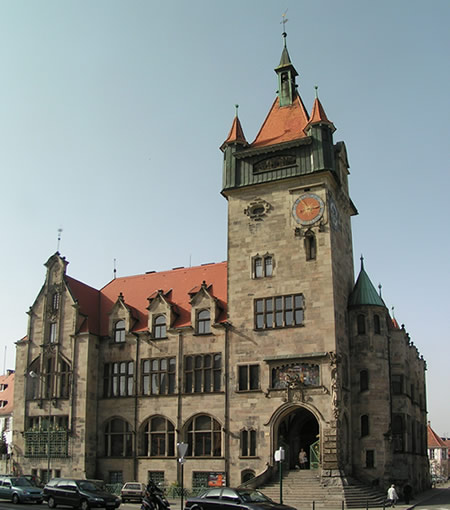KROPP FAMILY from Sonia Loison-Schneider
First Generation ——————————————
1. Peter KROPP. Born abt 1809 in Birlenbach, Bas- Rhin,Alsace France. Peter died on 16 Apr 1870; he was 60. Occupation: 1860 - Farmer.
Peter married Barbara JOEKEL. Born on 22 Nov 1807 in Alsace France. Barbara died on 22 May 1874; she was 66.
He immigrated in 1845 to America. They had the following children:
2 i. Jacob (~1836-)
3 ii. Georg (1840-1883)
4 iii. Daniel (1844-)
5 iv. Barbara (1849-)
Second Generation ——————————————
2. Jacob KROPP. Born abt 1836 in France.
On 23 Aug 1859 when Jacob was 23, he married Elisabeth Christine ORTH, in Parkway United Church Of Christ, Town And Country, St. Louis County, Missouri. Born on 10 Dec 1839 in St. Louis County, Missouri.
They had the following children:
6 i. Jacob (Died as Child) (1860-<1870)
7 ii. Rosa Elisabeth “Rosine” (1862-)
8 iii. Maria Barbara (Died as Child) (1864-<1870)
9 iv. Maria Christine “Lena” (1865-)
10 v. Julie Emmia “Julia” (1868-)
11 vi. Lydia Margarethe (Died as Child) (1873-<1880)
12 vii. Pauline Dorothea “Paulina” (1875-)
13 viii. Clara “Mary” (1880-)
Census Place 1880 - Central, St. Louis, Missouri
3. Georg KROPP. Born on 3 Mar 1840 in Alsace Lorraine, Germany / France. Georg died on 1 Apr 1883; he was 43. Occupation: 1880-Farmer.
On 21 Feb 1865 when Georg was 24, he married Elisabeth Dorothea MUELLER, in Parkway United Church Of Christ, Town And Country, St. Louis County, Missouri. Born on 2 Jul 1842 in St. Louis County, Missouri. Elisabeth Dorothea died on 15 Aug 1882; she was 40.
They had the following children:
14 i. Emilie Elisabeth (1867-)
15 ii. George Daniel (1869-)
16 iii. Julius Heinrich (1871-)
17 iv. Jacob Albert (1874-)
18 v. Louis Wilhelm (1876-)
Census Place 1880 - Bonhomme, St. Louis, Missouri
4. Daniel KROPP. Born on 22 Nov 1844 in Alsace. Immigrated in 1845. Naturalized in Yes.
On 5 Mar 1867 when Daniel was 22, he married Margarethe ZIMMER, daughter of Adam ZIMMER & Elizabeth SCHAUB, in Parkway United Church Of Christ, Town And Country, St. Louis County, Missouri. Born on 5 Oct 1846 in St. Louis County, Missouri.
They had the following children:
19 i. Heinrich Eduard “Henry” (1868-)
20 ii. Ida Ernestine Elise “Ida” (1870-)
21 iii. Margarethe Ottilie “Otillia” (1877-)
22 iv. Lulu (Adopted) (1893-)
Census Place 1880 - Bonhomme, St. Louis, Missouri
5. Barbara KROPP. Born on 28 Jun 1849 or Jul in Missouri.
On 11 Oct 1870 when Barbara was 21, she married Heinrich “Henry” ESCHENBRENNER, son of Georg ESCHENBRENNER, born 1803, died 1 Sept 1858 & Barbara HILLER,born 29 Sept 1806, died 5 Apr 1875, in Parkway United Church Of Christ, Town And Country, St. Louis County, Missouri. Born on 1 Mar 1846. Heinrich “Henry” died on 28 Feb 1923; he was 76.
They had the following children:
23 i. Emilie Christine Elisabeth “Amelia” (1871-)
24 ii. Elise Dorothea “Alicia” Or “Lizzie” (1873-)
25 iii. Heinrich Philipp “Henry” (1875-)
26 iv. Albert Jacob (Died as Child) (1878-<1880)
27 v. Anna Maria “Annie” (1880-)
28 vi. Louis Eduard (1882-)
29 vii. Otto Friedrich “Frederick” (1886-)
30 viii. Georg Albert “Albert” (1889-)
Census Place 1880 - Central, St. Louis, Missouri
Third Generation —————————————— 6. Jacob KROPP. Born in Jun 1860 in Missouri. Jacob died bef 1870; he was 9.
7. Rosa Elisabeth “Rosine” KROPP. Born on 7 May 1862 in Missouri.
8. Maria Barbara KROPP. Born on 2 May 1864 in Missouri. Maria Barbara died bef 1870; she was 5.
9. Maria Christine “Lena” KROPP. Born on 9 Aug 1865 in Missouri.
10. Julie Emmia “Julia” KROPP. Born on 6 Dec 1868 in Missouri.
11. Lydia Margarethe KROPP. Born on 3 Mar 1873. Lydia Margarethe died bef 1880; she was 6.
12. Pauline Dorothea “Paulina” KROPP. Born on 17 Dec 1875 in Missouri.
13. Clara “Mary” KROPP. Born on 28 May 1880 in Missouri.
14. Emilie Elisabeth KROPP. Born on 31 Dec 1867 in Missouri.
15. George Daniel KROPP. Born on 18 Oct 1869 in Missouri.
On 5 May 1891 when George Daniel was 21, he married Elizabeth BURKERT, daughter of Johann Christian BURKERT & Elise Charlotte WORTMANN, in Parkway United Church Of Christ, Town And Country, St. Louis County, Missouri. Born on 25 Jan 1870 in Missouri.
They had the following children:
31 i. Emilie Caroline “Lena” (1892-)
32 ii. Georg Albert (Died as Child) (1894-1896)
33 iii. John F. (1897-)
34 iv. Elizabeth “Lizzie” (1900-)
35 v. Christ (>1903-)
16. Julius Heinrich KROPP. Born on 13 Apr 1871 in Missouri. Occupation: 1910 - Farmer.
Julius Heinrich married Annie M.. Born abt 1880 in Missouri.
They had the following children:
36 i. Edna E. (~1902-)
37 ii. Elmer C. (~1904-)
38 iii. Clara E. (~1906-)
17. Jacob Albert KROPP. Born on 10 Sep 1874 in Missouri. Occupation: 1900 - Farmer.
Jacob Albert married Josephine. Born in Jun 1877 in Missouri.
They had the following children:
39 i. Albert J. (1898-)
40 ii. Oscar J. (1900-1985)
18. Louis Wilhelm KROPP. Born on 16 Jun 1876 in Missouri.
19. Heinrich Eduard “Henry” KROPP. Born on 27 Jun 1868 in Missouri. Occupation: 1900 - Clerk Poor House.
Heinrich Eduard “Henry” married Kate. Born in Oct 1868 in Missouri.
They had the following children:
41 i. Clara (1893-)
42 ii. Edward (1894-)
43 iii. Elsie (1895-)
44 iv. Dala? (1897-)
45 v. Ernest (1899-)
20. Ida Ernestine Elise “Ida” KROPP. Born on 5 Feb 1870 in Missouri.
21. Margarethe Ottilie “Otillia” KROPP. Born on 19 May 1877.
22. Lulu HANTZ? OR HANLG? Born in Jun 1893 in Illinois.
23. Emilie Christine Elisabeth “Amelia” ESCHENBRENNER. Born on 30 Jan 1871 in Missouri.
24. Elise Dorothea “Alicia” Or “Lizzie” ESCHENBRENNER. Born on 14 Sep 1873 in Missouri.
25. Heinrich Philipp “Henry” ESCHENBRENNER. Born on 9 Oct 1875 in Missouri.
26. Albert Jacob ESCHENBRENNER. Born on 17 Feb 1878. Albert Jacob died bef 1880; he was 1.
27. Anna Maria “Annie” ESCHENBRENNER. Born on 7 Jul 1880 in Missouri.
28. Louis Eduard ESCHENBRENNER. Born on 15 Aug 1882. Occupation: 1910 - Blacksmith.
29. Otto Friedrich “Frederick” ESCHENBRENNER. Born on 1 Sep 1886 or Sep 1887 in Missouri.
30. Georg Albert “Albert” ESCHENBRENNER. Born on 6 Apr 1889 in Missouri.
Fourth Generation ——————————————
31. Emilie Caroline “Lena” KROPP. Born on 25 Feb 1892 in Missouri.
32. Georg Albert KROPP. Born on 14 May 1894. Georg Albert died on 19 Nov 1896; he was 2.
33. John F. KROPP. Born in Apr 1897 in Missouri.
34. Elizabeth “Lizzie” KROPP. Born in Jan 1900 in Missouri.
35. Christ KROPP. Born aft 1903 in Missouri.
abt 1928 when Christ was 25, he married Edna L. DEUSER, daughter of Frederick Christian “Fred” DEUSER & Amelia J. “Emilie” DRIEMEYER. Born abt 1903 in Missouri. Edna L. died on 17 Mar 2004; she was 101. Buried in Forever Bellerive, Creve Coeur, St. Louis County, Missouri. Religion: St. John’s United Church Of Christ In Cappeln, Missouri.
They had the following children:
46 i. Living? (>1919-)
47 ii. Living? (>1900-)
36. Edna E. KROPP. Born abt 1902 in Missouri.
37. Elmer C. KROPP. Born abt 1904 in Missouri.
38. Clara E. KROPP. Born abt 1906 in Missouri.
39. Albert J. KROPP. Born in Jul 1898 in Missouri.
40. Oscar J. KROPP. Born on 16 Jan 1900 or Jun 1899 in Missouri. Oscar J. died in Apr 1985; he was 85.
Oscar J. married Marie Fredia TAPPMEYER. Born on 22 Feb 1904. Marie Fredia died on 20 Dec 1990; she was 86.
41. Clara KROPP. Born in Jun 1893 in Missouri.
42. Edward KROPP. Born in Jul 1894 in Missouri.
43. Elsie KROPP. Born in Aug 1895 in Missouri.
44. Dala? KROPP. Born in Feb 1897 in Missouri.
45. Ernest KROPP. Born in Aug 1899 in Missouri.
Fifth Generation ——————————————
46. Living? KROPP. Born aft 1919 in Missouri.
Betty married Harold STAAS. Born aft 1900.
47. Living? KROPP. Born aft 1900.

























 Saint George Church
Saint George Church













